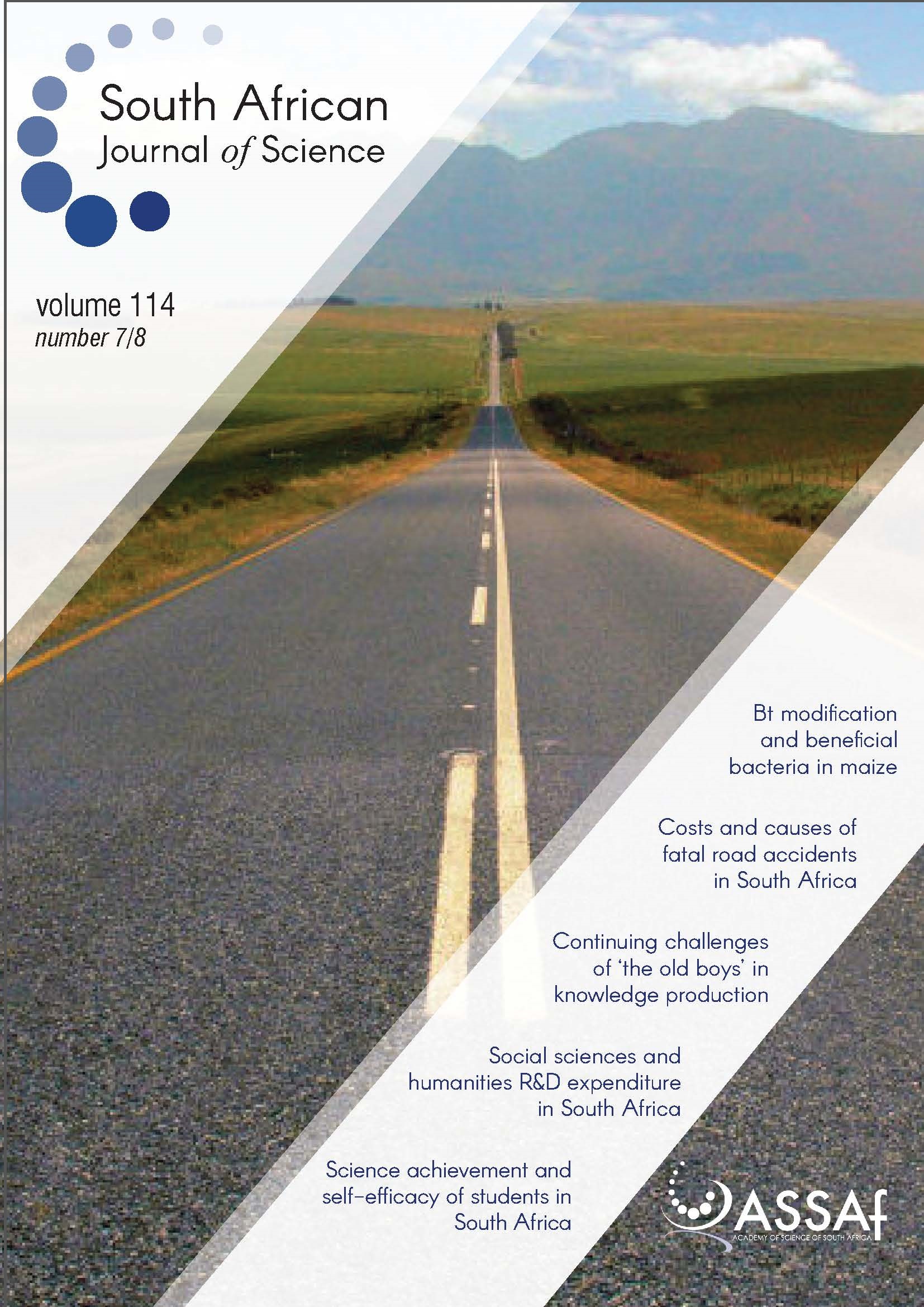Cosmic ray neutrons provide an innovative technique for estimating intermediate scale soil moisture
DOI:
https://doi.org/10.17159/sajs.2018/20170422Keywords:
cosmic ray probe, area-average, in-situ soil measurements, hydrologyAbstract
Soil moisture is an important hydrological parameter, which is essential for a variety of applications, thereby extending to numerous disciplines. Currently, there are three methods of estimating soil moisture: ground-based (in-situ) measurements; remote sensing based methods and land surface models. In recent years, the cosmic ray probe (CRP), which is an in-situ technique, has been implemented in several countries across the globe. The CRP provides area-averaged soil moisture at an intermediate scale and thus bridges the gap between in-situ point measurements and global satellite-based soil moisture estimates. The aim of this study was to test the suitability of the CRP to provide spatial estimates of soil moisture. The CRP was set up and calibrated in Cathedral Peak Catchment VI. An in-situ soil moisture network consisting of time-domain reflectometry and Echo probes was created in Catchment VI, and was used to validate the CRP soil moisture estimates. Once calibrated, the CRP was found to provide spatial estimates of soil moisture, which correlated well with the in-situ soil moisture network data set and yielded an R2 value of 0.845. The use of the CRP for soil moisture monitoring provided reliable, accurate and continuous soil moisture estimates over the catchment area. The wealth of current and potential applications makes the CRP very appealing for scientists and engineers in various fields.
Significance:
- The cosmic ray probe provides spatial estimates of surface soil moisture at an intermediate scale of 18 hectares.
- A single cosmic ray probe can replace a network of conventional in-situ instruments to provide reliable soil moisture estimates.
- The cosmic ray probe is capable of estimating soil moisture in previously problematic areas (saline soil, wetlands, rocky soil).
- Cosmic ray probes can provide data for hydro-meteorologists interested in land–atmosphere interactions.
- The cosmic ray probe estimates can be promising for remote sensing scientists for product calibration and validation.
Published
Issue
Section
License

All articles are published under a Creative Commons Attribution 4.0 International Licence
Copyright is retained by the authors. Readers are welcome to reproduce, share and adapt the content without permission provided the source is attributed.
Disclaimer: The publisher and editors accept no responsibility for statements made by the authors
How to Cite
- Abstract 1024
- PDF 789
- XML 288
- EPUB 212












.png)